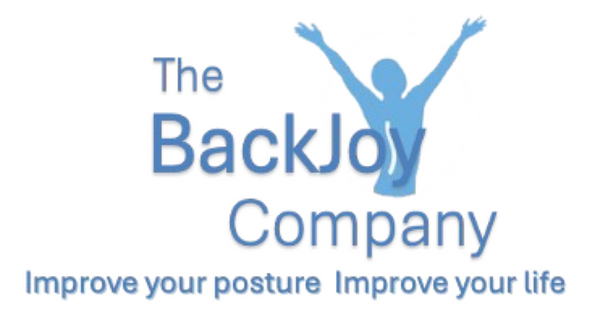
10 Small Steps for Back Pain Relief: World Spine Day
Today is World Spine Day and BackJoy is celebrating by helping you get to the source of that nagging ache 8/10 of us will experience at one point or another—back pain.
While many back pain sufferers have serious back-health issues (like scoliosis or herniated discs), there are those of us that may experience back pain because we sit for 8+ hours a day hunched over a computer, we sleep on our stomachs, or we lift heavy objects with our backs instead of our knees. The reasons for back pain are countless.
We all know how restrictive pain can be on letting us enjoy the things we love to do, so this month, we’re challenging you to choose one small action to help you live an enjoyable, pain free life. Small actions lead to big results, especially when it comes to lessening pain.
See below for tips on how to start relieving your back pain immediately.
1) Understand the cause of your back pain, don’t just treat the condition.
TIPS: Back pain is difficult to diagnose and treat. There are a variety of causes of back pain, and a wide range of possible back pain treatments that may or may not work for the same condition. Before you start taking painkillers or agree to surgery, it’s important to determine what is causing your pain so you can assess the proper treatment. If you find that your back pain persists after a couple of weeks, don’t hesitate to call your doctor so he can help with a treatment plan.
2) Keep a pain journal.
TIPS: Pain management experts recommend keeping a pain journal to help doctors figure out the source of your pain and figure out how to help you manage that pain. Make a habit of writing in your journal a few times a day and describe the type of pain you are having on a scale 1-10. Talk about activities that might have spurred pain, the time of day you experienced pain and use descriptive words like tingling, burning or aching.

3) Use natural alternatives when it comes to treating/preventing back pain (no meds!)
TIPS: While drugs like ibuprofen and acetaminophen can reduce inflammation, they don’t always get to the root of the problem and may sometimes only mask the symptoms. A number of alternative approaches will help you alleviate discomfort, address the root cause of your pain and promote health. Our recommendations?—Back supports, chiropractic care, yoga, massage or back exercises. Also keep good posture top of mind.
4) Avoid skinny jeans for the month (or too tight of clothes)
TIPS: Choose pants that fit more loosely and ride higher. When pants are too tight or low riding, this can cause damage to the nerves extending from the thigh to the spinal column. Some symptoms may include tingling, numbness, pain and hypersensitivity in the upper legs as well as stress on the back.
5) Do a spine-strengthening stretch.
TIPS: Stretching your spine will help increase mobility and decrease back pain. To start, try pulling your knees to the chest while lying on your back with your head flexed forward. You should feel the stretch in your low back. Hold the stretch for 20-30 seconds (this time-frame allows the muscles around the spine to loosen) and then repeat 3 times.

6) Eat anti-inflammatory foods (nuts, seeds, fish).
TIPS: The foods we eat can either help or contribute to pain and inflammation in the body. Take a tour of your pantry and remove all foods containing high-fructose corn syrup (HFCS), artificial sweeteners, and other ingredients that you can’t pronounce. Replace those foods with dark green leafy vegetables, broccoli, chard, kale, nuts like walnuts, almonds, macadamia nuts, pecans, and seeds like pumpkin seeds and flax seeds.
7) Try to avoid carrying a purse, super heavy backpack or child in one arm.
TIPS: Lugging a backpack or purse around by one strap can cause the disproportionate shift of weight to one side, leading to neck and muscle spasms, as well as low-back pain. Choose a bag that is proportionate to the size of your body and that has individualized compartments to help you position the contents most effectively. Place the strap diagonally across the opposite shoulder to distribute weight evenly across your back. Alternate the bag to the other shoulder often.

8) Be aware of your sitting posture/don’t cross your legs!
TIPS: Keep your head and shoulders back, and tilt your hips upright with an “S” curve in your spine. Maintain good ergonomic principles: find a good chair, use a proper pelvic support and keep your knees bent at 90 degrees. Always make sure to take your wallet out of your back pocket before you sit down, as sitting on your wallet can cause sciatic pain.
9) Don’t sleep on your stomach!
TIPS: For side sleep, place a pillow between your knees and for back sleep, place a pillow under your knees. Finding a pillow that preserves the curve in your neck will help reduce neck and back pain.
Also find a mattress with good support. Experts recommend a soft-top mattress with firm coils underneath.

10) Move more!
TIPS: Walk, swim bike or do some other aerobic activity to help control your weight. Extra belly fat will exhaust your muscles and add pressure on the tissue around your vertebrae. That pressure can throw off the natural curve of your lower back, causing low-back pain. Add in strength-building moves to keep your core strong (a strong core helps support your spine).

1 comment
Thank you. this is very helpful